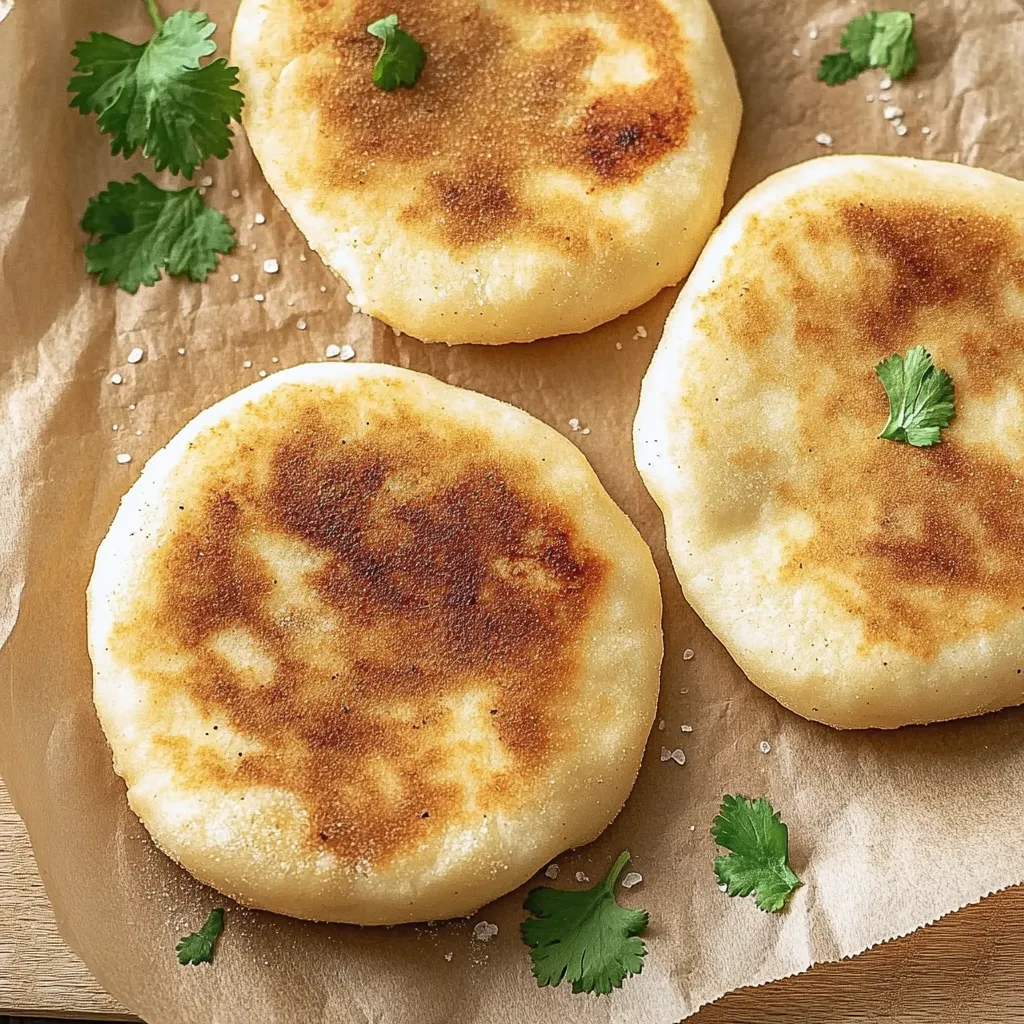 Pin it
Pin it
This cheese-filled corn cake recipe delivers authentic Colombian arepas con queso with a perfect balance of crispy exterior and soft, gooey cheese-filled interior. The combination of traditional masarepa and melty mozzarella creates an irresistible snack that will transport you straight to the streets of Bogotá.
I first made these arepas during a Colombian cooking class and have been perfecting them at home ever since. My family now requests them weekly as our Friday night snack tradition paired with hot chocolate.
Ingredients
- 2 cups masarepa: special precooked white cornmeal found in Latin food sections
- 1/2 teaspoon sea salt: enhances the corn flavor without overpowering
- 2 ounces finely crumbled Cotija cheese: adds authentic saltiness and texture
- 1 tablespoon softened butter: creates tenderness in the dough
- 1 1/4 cups warm water: helps hydrate the cornmeal properly
- 8 ounces shredded mozzarella cheese: melts perfectly for that signature cheese pull
- Oil or butter for cooking: creates the golden crispy exterior
Step-by-Step Instructions
- Prepare the dough:
- Combine masarepa, salt, crumbled Cotija, butter, and warm water in a medium bowl. Mix thoroughly until all ingredients are well incorporated. You want to achieve a play dough-like consistency that is pliable but not sticky. If the dough feels too dry, add water one tablespoon at a time.
- Rest the dough:
- Cover the bowl with a clean kitchen towel and allow the dough to rest for 10 minutes. This resting period is crucial as it allows the masarepa to fully hydrate ensuring a tender texture in the final product. Test the dough by flattening a small piece; if the edges crack, add a bit more water.
- Shape the arepas:
- With slightly dampened hands, divide the dough into 8 equal portions. Roll each portion into a smooth ball, then gently pat it into a 5-inch circle about 1/4 inch thick. Keep your hands slightly wet to prevent sticking and ensure smooth edges.
- Add the cheese filling:
- Place about 2 tablespoons of shredded mozzarella in the center of four dough circles, leaving a 1/2-inch border around the edges. This border is important for properly sealing the arepas and preventing cheese from leaking during cooking.
- Seal and shape:
- Top each cheese-filled circle with another dough circle. Carefully press and seal the edges together, working your way around the circumference. Gently flatten between your palms to create a uniform 1/2-inch thick disk with smooth edges.
- Cook to golden perfection:
- Heat a skillet over medium-low heat with a bit of oil or butter. Place the arepas in the heated skillet and cook for 4 to 5 minutes per side, moving them occasionally to ensure even browning. The outside should develop a beautiful golden crust while the inside remains soft and the cheese melts completely.
- Serve warm:
- Transfer the finished arepas to a plate and serve immediately while the cheese is hot and stretchy. For extra richness, spread a little butter on top as they come off the heat.
 Pin it
Pin it
Masarepa is the secret ingredient that cannot be substituted with regular cornmeal or masa harina. I learned this the hard way when I tried using regular cornmeal and ended up with crumbly cakes that fell apart. The precooked nature of masarepa gives these arepas their signature texture that holds together beautifully.
The Perfect Dough Consistency
The key to successful arepas lies in getting the dough consistency exactly right. It should feel like smooth play dough, not too wet or too dry. If your dough feels crumbly, add water a tablespoon at a time until it comes together. Conversely, if it’s sticky, add a sprinkle of masarepa. This balance is what gives arepas their characteristic texture—tender on the inside while developing that coveted crispy exterior during cooking.
Cheese Options and Variations
While this recipe uses the traditional combination of Cotija and mozzarella, you can experiment with different cheese combinations to suit your taste. Queso fresco provides a more authentic flavor but may not melt as well as mozzarella. For a sharper taste, try mixing in some grated cheddar or Monterey Jack. You can also add other fillings like shredded chicken, avocado, or beans for a more substantial meal. The versatility of arepas makes them perfect for customizing to your preferences.
Serving Suggestions
In Colombia, arepas con queso are enjoyed throughout the day, from breakfast to late night snacks. Serve them plain as a side dish to soups and stews, or dress them up as a meal on their own. They pair beautifully with fried eggs and avocado for breakfast or alongside grilled meats for dinner. One of my favorite ways to enjoy them is with a drizzle of honey for a sweet and savory combination that highlights the natural corn flavor and salty cheese.
Frequently Asked Questions
- → What is masarepa and where can I find it?
Masarepa is pre-cooked cornmeal used to make arepas. Look for it in the Latin section of grocery stores or online. Popular brands include P.A.N.
- → How do I prevent the dough from cracking?
If the dough cracks, it's likely too dry. Add a tablespoon of water at a time until it becomes smooth and pliable.
- → What type of cheese works best for arepas?
Mozzarella and Cotija are excellent choices. The mozzarella provides a gooey texture, while Cotija adds a tangy flavor.
- → Can I cook arepas without butter?
Yes, you can use oil or cook on a non-stick or cast iron skillet for a healthier alternative.
- → How do I store leftover arepas?
Store cooked arepas in an airtight container in the fridge for up to 3 days. Reheat on a skillet or in the oven for the best texture.
